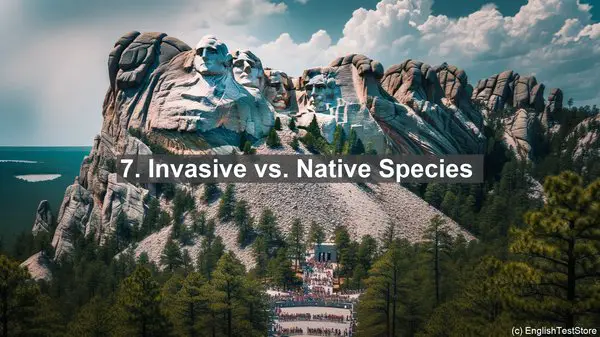Introduction: The Importance of River Ecology
Before we delve into the confusing words, let’s understand why river ecology matters. Rivers are not just water bodies; they’re intricate ecosystems supporting diverse plant and animal life. By studying river ecology, we can assess the health of these ecosystems and take measures to protect them.
1. River vs. Stream
Many use ‘river’ and ‘stream’ interchangeably, but they have distinct differences. A river is larger, deeper, and flows more steadily, while a stream is smaller, shallower, and often faster. Remember, rivers are the lifelines, while streams are their tributaries.
2. Erosion vs. Sedimentation
Erosion and sedimentation are two opposing forces shaping river landscapes. Erosion is the wearing away of soil and rocks, while sedimentation is the deposition of eroded materials. Both processes are vital for river dynamics, but they can also lead to environmental challenges like siltation.
3. Tributary vs. Distributary
Tributaries and distributaries are river branches, but they differ in their roles. A tributary flows into a larger river, adding to its volume, while a distributary branches off from a main river, often forming a delta. Think of tributaries as ‘contributors’ and distributaries as ‘dividers.’

4. Wetland vs. Floodplain
Wetlands and floodplains are both water-rich areas, but they serve distinct purposes. Wetlands are often permanent, acting as natural filters and nurseries for aquatic life. Floodplains, on the other hand, are low-lying areas that get submerged during floods, replenishing soil fertility.

5. Estuary vs. Delta
Estuaries and deltas are transitional zones where rivers meet the sea, but they have different characteristics. An estuary is a partially enclosed coastal area with a mix of fresh and saltwater, while a delta is a landform created by sediment deposition at a river’s mouth. Estuaries are like ‘brackish bays,’ while deltas are ‘sediment-rich deltas.’
6. Benthos vs. Plankton
Benthos and plankton are two vital components of river ecosystems, but they inhabit different zones. Benthos refers to organisms living at the riverbed, while plankton are drifting organisms. Picture benthos as ‘bottom-dwellers’ and plankton as ‘wanderers.’
7. Invasive vs. Native Species
Invasive and native species have contrasting impacts on river ecosystems. Invasive species, often introduced by human activities, can outcompete natives, leading to imbalances. Native species, on the other hand, have adapted to the local environment over time. Protecting native biodiversity is crucial for ecosystem stability.
8. Dissolved Oxygen vs. Biological Oxygen Demand
Oxygen is vital for aquatic life, but its levels can vary. Dissolved oxygen refers to the oxygen present in water, essential for fish and other organisms. Biological oxygen demand (BOD) is the amount of oxygen consumed by microorganisms breaking down organic matter. High BOD can deplete dissolved oxygen, harming aquatic life.
9. Point Source vs. Non-Point Source Pollution
Pollution in rivers can come from various sources. Point source pollution refers to contaminants entering from a specific location, like a factory discharge pipe. Non-point source pollution, on the other hand, is diffuse, often from runoff carrying agricultural or urban pollutants. Both types require mitigation for river health.
10. Riparian vs. Aquatic Plants
Riparian and aquatic plants are essential for river ecosystems, but they grow in different areas. Riparian plants thrive along riverbanks, stabilizing the soil and providing shade. Aquatic plants, as the name suggests, grow fully or partially submerged, providing habitat and oxygenating the water.
